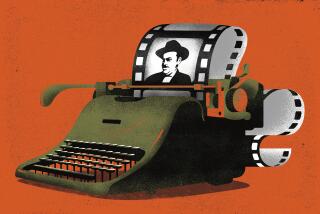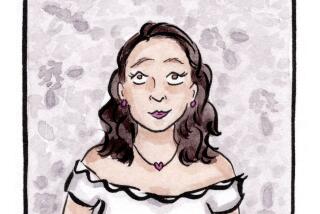Review: ‘What She Said: The Art of Pauline Kael’ lets the critic speak her mind
To filmgoers, filmmakers and even film critics of a certain generation, no figure loomed larger than Pauline Kael. Few if any of her colleagues — Roger Ebert comes to mind — had her breadth of influence and no one is likely to again.
But with great power came great controversy, and Kael’s reputation both then and now was a sea of contradictions, a conundrum that “What She Said: The Art of Pauline Kael,” an admiring documentary by Rob Garver, addresses in a sensibly straightforward way.
As a regular reviewer for the New Yorker for more than 20 years and the author of 13 books, Kael had the kinds of insights into movies that could take your breath away.
Her often thrilling, take-no-prisoners writing style was a tool she used to promote the careers of young filmmakers whose work she admired, a group that included such future luminaries as Steven Spielberg, Robert Altman and Martin Scorsese.
Yet, as writer-director Paul Schrader says, it could also seem that “at the end of the day what Pauline Kael promoted wasn’t film, it was herself.”
An adroit self-mythologizer without a scintilla of self doubt, she delighted in going against the grain, railing against the critical establishment and insisting that unless people got angry at you, you weren’t doing your job.
Dealing with a personality this strong could not have been easy, and director Garver, whose background is in short films, does a balanced job, giving space to Kael’s partisans while finding time for the other side.
For openers, Garver has interviewed more than 35 formidably articulate individuals, including filmmakers David O. Russell and Quentin Tarantino (“We all grew up reading her”) and astute fellow critics like the Wall Street Journal’s Joe Morgenstern and Time’s Stephanie Zacharek.
Garver has also dug deeply into archival material, coming up with home movies of a younger Kael living in the Bay Area and audio clips from the Berkeley-based film review program she did for Pacifica Radio’s KPFA starting in the 1950s.
More unexpected, Garver came up with the idea of giving audiences a break from talking heads by illustrating audio commentary with clips from Hollywood films.
So when Kael talks, as she does often, of people getting mad at her, we see Jack Nicholson wielding an ax in “The Shining” and James Cagney making free with a grapefruit in “The Public Enemy.”
That she was a movie lover was one of the many things Kael never doubted. She remembers the sensation of seeing her first movie as a child on her parent’s lap in Petaluma, Calif., and realizing “that was it for me.”
But, as Kael often claimed, in her era it was “difficult for men to accept the idea women can argue rationally,” and she gravitated first to play writing, even moving to New York and working briefly (the mind boggles) as a Park Avenue nanny.
Once becoming a critic after falling into it almost by accident on her return to California, Kael proved fearless in standing up for positions she believed in, no matter what the consequences.
This was especially true when she took a strong position against Andrew Sarris and his championing of the auteur theory. Sarris’ wife, the critic Molly Haskell, is close to shudders as she describes her feeling that Kael “criticized him in a personal, almost slanderous way.”
Similarly, David Lean reports on the disastrous effects of an in-person tongue-lashing from Kael; the Wall Street Journal’s Morgenstern reports she “could be cruel for no reason,” and even Kael’s daughter Gina, one of the film’s most affecting voices, talks about “her lack of introspection, self-awareness, restraint or hesitation.”
Those qualities, her daughter also believes, helped make her a great critic, and “What She Said” goes into all Kael’s most celebrated work, including her early support of the French New Wave and her passion for Bernardo Bertolucci’s “Last Tango in Paris.”
Most moving, perhaps, are Kael’s thoughts on what it meant to her to be a critic. “I was lucky, I was able to write about movies in a way people were willing to pay me for,” she says. “To be paid for thinking, what a marvelous way to live.”
'What She Said: The Art of Pauline Kael'
Not rated
Running time: 1 hour, 35 minutes
Playing: Starts Dec. 13, Landmark Nuart, West Los Angeles
More to Read
Only good movies
Get the Indie Focus newsletter, Mark Olsen's weekly guide to the world of cinema.
You may occasionally receive promotional content from the Los Angeles Times.







